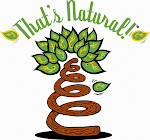Wednesday, March 18, 2009
Saturday, February 28, 2009
Sunday, February 8, 2009
Wednesday, January 14, 2009
hello from a wren's nest farm


Tuesday, December 30, 2008
Getting Started
Monday, November 24, 2008
Western SARE Goals
- Promote good stewardship of the nation’s natural resources by providing site-specific, regional and profitable sustainable farming and ranching methods that strengthen agricultural competitiveness; satisfy human food and fiber needs; maintain and enhance the quality and productivity of soil; conserve soil, water, energy, natural resources and fish and wildlife habitat; and maintain and improve the quality of surface and ground water.
Our goal to educate the youth in South-Eastern Colorado would allow students to start understanding and seeing the implications of sustainable agriculture in our communities. By having a curriculum that educates through not only by reading material, but also by allowing the students to physically go to the farm and become an active part of the production process, we will be opening their minds to how this affects them and gain their interest so that as they grow and continue their education, they can become a more active part of agriculture within the community. Involved education is the best way to enhance student learning and will more effectively illustrate how interdependent our society is upon agriculture.
- Enhance the quality of life of farmers and ranchers and ensure the viability of rural communities, for example, by increasing income and employment, especially profitable self-employment and innovative marketing opportunities in agriculture and rural communities.
To ensure the viability of rural communities, it is absolutely necessary to have the up-coming generation interested in supporting their community. The best way to gain interest and support from our youth is to have programs available that allow them to be involved physically and emotionally in the process. Participating farmers and ranchers will benefit financially from having increased traffic to their locations, and the youth participating in the programs will develop relationships with their local producers. When the consumer knows his producer, loyalty purchases due to relationship and understanding of the process will continue a cycle that is essential to the survival of the small farm and ranch owner. In addition, when the quality of life of the producer is raised, the tendency for expenditure within a community improves, because additional income is available for purchasing. Community support for the producer increases, and the risk of losing valuable farm and ranch land to urban development decreases.
- Protect the health and safety of those involved in food and farm systems by reducing, where feasible and practical, the use of toxic materials in agriculture production, and by optimizing on-farm resources and integrating, where appropriate, biological cycles and controls.
Educating our youth and students about the potential implications of toxic materials in agriculture, and the inherent benefits of sustainable farming systems will be crucial for the continued support of these sustainable methods and the continued reduction of toxic materials. Farmers and consumers together help make these choices, however the only way to be able to make a choice is to be able to become educating on the topics. Using these topics in our curriculum for the schools will be the initial step of educating future consumers about choices in agriculture and the benefits of sustainable farm systems to the environment, consumer, and community. When the students are educated, they will be shown the potential benefits and risks to decisions relating to their agricultural community and will be able to voice an informed opinion in concert with the farmers and ranchers. Community support for new projects, innovative ways of farming, and use or disuse of previous farming behavior can only come about through balanced education. This education must start at a young age to promote a true sense of understanding of factors that affect communities and their surrounding farms for the time that these young voters shape the direction of their hometowns.
- Promote crop, livestock and enterprise diversification.
Sustainable agriculture encompasses many variables that make it what one deems “sustainable”. One of the greatest components is the diversification of the crops, livestock, and overall operations of the enterprise. This, again, would be part of the curriculum presented to our students. Simplified overviews of our producers’ operations and the application of sustainable and diversified enterprises will be displayed to the students in ways that allow them to see and question the various types of crops, livestock, and operations of the enterprise and supply-chain. Basic education is paramount in encouraging students to understand their role as consumers in striving for diversification in production. Once the students understand the inherent risks to limiting diverse plant development, they will understand that supporting sustainable and diversified crop, livestock, and enterprises is essential for the survival of the farmer and rancher as well as for the overall benefit of the community. Consumer choice drives the producers provisions, and when the consumer displays knowledge and desire for diversified product due to education on the variety available, the producer is enabled to provide products the consumer needs. This depth of education can only come through active education and participation with the producers.
- Examine the regional, economic, social and environmental implications of adopting sustainable agriculture practices and systems.
Our students will learn about different types of farming operations and the different types of effects they have on the environment. The benefits and risks will be weighed by the ones who experience them directly, and understanding of the individual’s role in the overall environment will be emphasized. Accurate information must be placed in the hands of our future decision-makers, because our environment’s health and continuation depends entirely on our youth. Education through hands-on experiences, relationships with producers, conversations with lawmakers, and personal practice are the most effective ways to edify the students equip them properly for the future. The changes in the students and their families’ purchasing methods may be as simple as supporting a local producer or as complex as developing our future leaders who help decide the tone of our regional, economic, social, and environmental involvement. By providing both an in-depth, local perspective as well as a national or international understanding, the young consumer will learn much more about his or her impact on the overall experience of life. Hands on learning, activities, and developing relationships with the producers are the best way for students to learn about the interactions and interdependence between communities and the agricultural communities around them.
Outreach Plan
We plan on creating the curriculum for these students, and then incorporating at least five producers into that curriculum, where the farmers go to the students, and then the students go to the farmers.
While this program is being implemented, we will continue to reach out to other producers in the region, as well as additional schools that may be interested in having this type of curriculum in their classrooms.
After the program is complete, then our results and overall summary of the project will be filtered into the community via local publications and local news networks.




